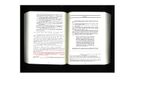User:Simon/Understanding texts: Difference between revisions
| Line 7: | Line 7: | ||
The ''editorial'' dimension; a sequence. A line of characters and spaces, the particular order that the writer sets these in. Text becomes an object, a carrier of thoughts and feelings, something that can be sent back and forth between participants in a conversation. | The ''editorial'' dimension; a sequence. A line of characters and spaces, the particular order that the writer sets these in. Text becomes an object, a carrier of thoughts and feelings, something that can be sent back and forth between participants in a conversation. | ||
The ''technical'' dimension; a process. Cybertexts and “ergodic literature” require non-trivial effort to read<ref>Aarseth, E.J. (1997) ''Cybertext: perspectives on ergodic literature''. Baltimore, Md: Johns Hopkins University Press.</ref>. Examples of this are MUDs (multi-user dungeons/domains/dimensions), which are real-time virtual worlds in which the players construct the story on-the-fly, and Mark Z. Danielewski’s ''House of Leaves''<ref>Danielewski, M.Z. (2000) Mark Z. Danielewski’s House of leaves. 2nd ed. New York: Pantheon Books.</ref>, a printed novel that defies a linear narrative structure through its cybertextual materiality. | The ''technical'' dimension; a process. Cybertexts and “ergodic literature” require non-trivial effort to read<ref>Aarseth, E.J. (1997) ''Cybertext: perspectives on ergodic literature''. Baltimore, Md: Johns Hopkins University Press.</ref>. Examples of this are MUDs (multi-user dungeons/domains/dimensions), which are real-time virtual worlds in which the players construct the story on-the-fly, and Mark Z. Danielewski’s ''House of Leaves''<ref>Danielewski, M.Z. (2000) ''Mark Z. Danielewski’s House of leaves''. 2nd ed. New York: Pantheon Books.</ref>, a printed novel that defies a linear narrative structure through its cybertextual materiality. | ||
The ''social'' dimension; a framework, a network of texts that elicit further texts. | The ''social'' dimension; a framework, a network of texts that elicit further texts. | ||
Revision as of 21:44, 5 June 2020
understanding texts
see also human writing, machine writing, producing texts, technologising the word
What makes up a text depends on perspective and overlapping dimensions of text; editorial, technical and social.
The editorial dimension; a sequence. A line of characters and spaces, the particular order that the writer sets these in. Text becomes an object, a carrier of thoughts and feelings, something that can be sent back and forth between participants in a conversation.
The technical dimension; a process. Cybertexts and “ergodic literature” require non-trivial effort to read[1]. Examples of this are MUDs (multi-user dungeons/domains/dimensions), which are real-time virtual worlds in which the players construct the story on-the-fly, and Mark Z. Danielewski’s House of Leaves[2], a printed novel that defies a linear narrative structure through its cybertextual materiality.
The social dimension; a framework, a network of texts that elicit further texts.
The library is a collection of texts; not just books, but also files, metadata, scripts and the processes that determine how they are used, and the readers who use them.
Image: A spread from Danielewski’s House of Leaves

